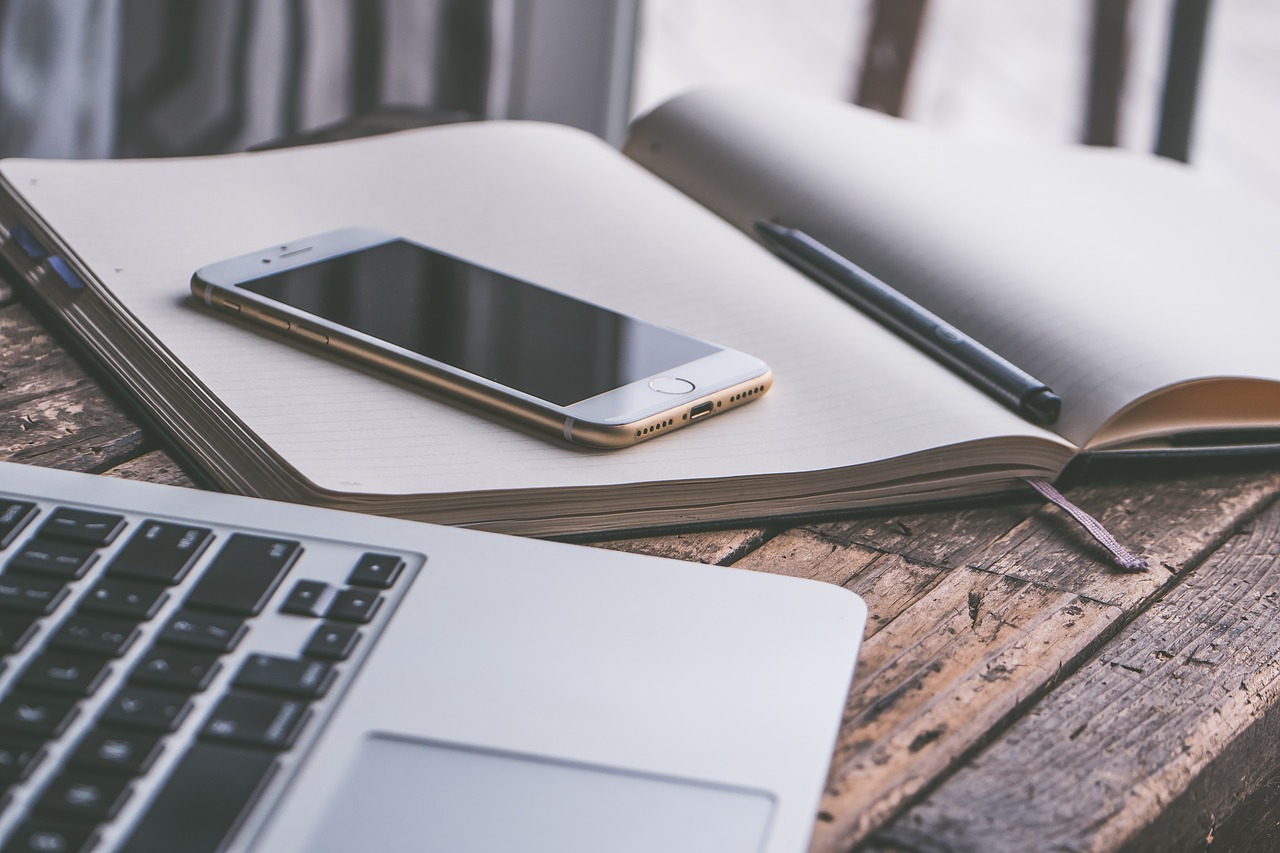by Addy Wright
Have you ever checked your smartphone, found no notifications, and turned it off, just to find yourself checking again thirty seconds later? Rest assured, you’re not alone. The reason you and so many others get that irresistible urge to constantly check your phone is that it and the apps on it are specifically designed to be as addictive as possible. Today, smartphone addiction is so prevalent that the psychological attachment to our phones has its own name: nomophobia. This name derives from the phrase “no mobile phone phobia” (Valdesolo, n.d.).
Smartphones themselves are purposefully designed to be addictive, and so is each individual application on them. If you think about it, this makes a great deal of sense; the more addictive the phone or app, the more it gets used, and the more successful the companies providing the services become.
Many people are dubious that smartphone addiction really exists, but there is a real scientific basis for nomophobia. The American Society of Addiction Medicine defines addiction as “a primary, chronic disease of brain reward, motivation, memory, and related circuitry.” They go on to discuss the characterizations of addiction, such as “inability to consistently abstain, impairment in behavioral control, craving, diminished recognition of significant problems with one’s behaviors and interpersonal relationships, and a dysfunctional emotional response.” Notifications from apps, social media and otherwise, cause a release of dopamine, the neurotransmitter responsible for feelings of pleasure and reward. This ties directly into the definition of addiction.
There are actually great similarities in the neurological effects of repeated smartphone use and cocaine and other hard drugs, which affect the same ‘pleasure center’ in the brain. However, unlike cocaine, your smartphone thankfully does not impair the function of your prefrontal cortex! However, smartphone users do become highly dependent on these dopamine surges, which keep us coming back to check our phones, even when we don’t need or want to, or when we already know that there won’t be any notifications. Teens are especially affected by these dopamine rushes, due to higher activity in the nucleus accumbens area of the brain, which is associated with rewards (Galvan, 2010).
The design of smartphones and smartphone apps is extremely complex, but there are some key features that are used to make users stay longer and keep coming back. One such feature is the ‘pull to refresh’ that we see in most social media or news apps. Just about every app is capable of refreshing itself automatically. Requiring an action on your part gives you an illusion of control, using similar psychological strategies as pulling the lever on a slot machine.
Infinite scrolling and autoplay are two more ways that app designers trick you into spending more time on your phone. Naturally, it is easier for us to stop indulging in something when there is a visible indication that we should. For example, it is easier for us to stop eating if our plate is empty. If it was constantly being refilled, we would have a harder time realizing that we didn’t want or need anymore. Autoplay and infinite scrolling provide no natural endpoint, which encourages us to stay on the app longer.
Color is also a big psychological factor for the addictive qualities of smartphones (Ciotti, 2016). Colors can be used to make people feel different ways. Our eyes tend to gravitate especially towards bright, warm colors, such as reds. As apps have evolved, many have redesigned their logos to incorporate these colors. Take Instagram, for example. Instagram’s logo used to be brown, but they have since changed it to better catch the eye, with bright yellows, oranges, reds, and purples. Colors can also be used to create visual stress. When you open your phone and see the bright red bubble in the corners of your apps, it makes it much harder to resist checking them.
If you have a smartphone, it’s very likely that at some point you’ve needed to put it away for a class, work, or just so you could get something done. After doing so, you may have started to feel some stress or anxiety, or just an overwhelming urge to check your phone. This is because the idea of having “missed” a notification triggers a release of cortisol, causing you to feel anxious until you check your phone.
Variable reward psychology is yet another method employed to increase the addictiveness of our phones. This is the idea that something is more addicting when a reward is delivered randomly, rather than on a set schedule. If a reward is delivered every time we do a certain thing, such as checking an app, we don’t feel that we have to do it as much because we know we will receive the reward. We want to get that dopamine boost every time we open an app, but the notifications are intentionally spread out, increasing the likelihood of us checking back sooner. This is a very successful way to cause users to form habits of checking these apps.
Now, many people argue that it is impossible for a person to be ‘addicted’ to a smartphone because addiction requires there to be physical withdrawal symptoms, and you can’t get withdrawals from an activity. However, this is abjectly untrue, according to definitions of addiction. The American Society of Addiction Medicine specifies that addiction can refer to drugs or addictive behaviors and activities. Furthermore, studies have shown that separation of a regular smartphone user from their device actually does result in negative physiological and mental effects, such as increased anxiety, heart rate, and blood pressure (Clayton, Leshner, Almond, 2015).
Apart from the negative effects that can come from separation from your phone, there are also a number of problems stemming from just the overuse of smartphones. There is a strong causal link between heavy smartphone use and increased hyperactivity, decreased attention span, and a change in social cognition, according to a 2017 study (Hadas, Lazarovits, Alyagon, Eliraz, Zangen, 2017). Social media use is also known to aggravate depression and anxiety and is thought to increase the likelihood of suicidal thoughts and tendencies.
A study on dental students in 2017 showed that nomophobia also had a significant impact on academic performance (Prasad, Patthi, Singla, Gupta, Saha, Kumar,Malhi, Pandita, 2017). Students spent less time studying, paid less attention in classes, and slept less due to time spent on mobile devices. A recent study on over four thousand US children aged 8-11 furthered these claims (Walsh, Barnes, Cameron, Goldfield, Chaput, Gunnell, Ledoux, Zemek, Tremblay, 2018). In this study, it was shown that screen time for children doesn’t just affect academics, it actually has a negative impact on cognition. In other words, your smartphone is actually making you dumber.
It’s for reasons like these that even individuals in the software development industry, some of the people closest to smartphone and app development and the science behind it, are beginning to condemn these devices. Justin Rosenstein, the former Facebook engineer who first created the ‘like’ button, is one of the growing numbers of software designers and engineers who have begun speaking out about how destructive these devices can be. Take it from the experts: separation from your phone may not cause vomiting or induce hallucinations, but the effects of smartphone addiction are all too real.
References
American Society of Addiction Medicine. (2011, April 12). Retrieved from https://www.asam.org/resources/definition-of-addiction
Ciotti, G. (2016, April 13). The Psychology of Color in Marketing and Branding. Retrieved from https://www.entrepreneur.com/article/233843
Clayton, R. B., Leshner, G., & Almond, A. (2015, January 08). Extended iSelf: The Impact of iPhone Separation on Cognition, Emotion, and Physiology. Retrieved from https://academic.oup.com/jcmc/article/20/2/119/4067530
Galvan, A. (2010). Adolescent Development of the Reward System. Retrieved from https://www.ncbi.nlm.nih.gov/pmc/articles/PMC2826184/
Hadar, A., Hadas, I., Lazarovits, A., Alyagon, U., Eliraz, D., & Zangen, A. (2017, July 5). Answering the missed call: Initial exploration of cognitive and electrophysiological changes associated with smartphone use and abuse. Retrieved from https://journals.plos.org/plosone/article?id=10.1371/journal.pone.0180094
LaMotte, S. (2017, December 01). Smartphone addiction could be changing your brain. Retrieved from https://www.cnn.com/2017/11/30/health/smartphone-addiction-study/index.html
Lewis, P. (2017, October 06). ‘Our minds can be hijacked’: The tech insiders who fear a smartphone dystopia. Retrieved from https://www.theguardian.com/technology/2017/oct/05/smartphone-addiction-silicon-valley-dystopia
Prasad, M., Patthi, B., Singla, A., Gupta, R., Saha, S., Kumar, J. K., . . . Pandita, V. (2017, February 11). Retrieved from https://www.ncbi.nlm.nih.gov/pmc/articles/PMC5376814/
Valdesolo, P. (n.d.). Scientists Study Nomophobia-Fear of Being without a Mobile Phone. Retrieved from https://www.scientificamerican.com/article/scientists-study-nomophobia-mdash-fear-of-being-without-a-mobile-phone/
Variable Rewards: Want To Hook Users? Drive Them Crazy. (2018, February 17). Retrieved from https://www.nirandfar.com/2012/03/want-to-hook-your-users-drive-them-crazy.html
Walsh, J. J., Barnes, J. D., Cameron, J. D., Goldfield, G. S., Chaput, J., Gunnell, K. E., . . . Tremblay, M. S. (2018, September 27). Associations between 24 hour movement behaviours and global cognition in US children: A cross-sectional observational study. Retrieved from https://www.sciencedirect.com/science/article/pii/S2352464218302785?via=ihub
Walton, A. G. (2018, January 27). Phone Addiction Is Real — And So Are Its Mental Health Risks. Retrieved from https://www.forbes.com/sites/alicegwalton/2017/12/11/phone-addiction-is-real-and-so-are-its-mental-health-risks/#1bb306d513df
Wan, W. (2018, June 17). Rebel developers are trying to cure our smartphone addiction – with an app. Retrieved from https://www.washingtonpost.com/national/health-science/rebel-developers-are-trying-to-cure-our-smartphone-addiction–with-an-app/2018/06/17/153e2282-6a81-11e8-bea7-c8eb28bc52b1_story.html?noredirect=on&utm_term=.f8b8ec779ce4





One Comment
foldeknive danske
Helpful info. Fortunate me I found your site unintentіonally, and I am shocked why thіs
accident didn’t came about earlier! I bookmarked it.